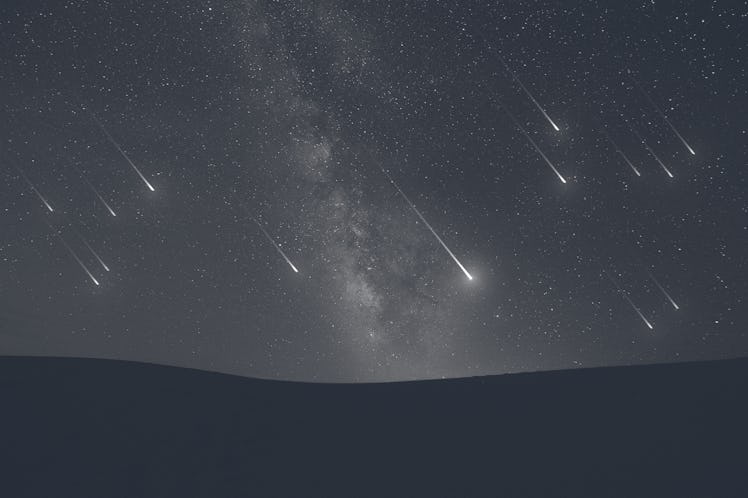The Biggest Daytime Meteor Shower Is Peaking Now — And Here's How You Can Catch It
They’re not shooting across the sky — they’re shooting up from the horizon.

There’s a pretty show in the sky and if you love the cosmos, you’re going to want to carve out a few minutes to take a look. The biggest daytime meteor shower, called the Arietids, is happening right now, and since the peak will end tomorrow, here’s everything you need to know, including how to catch it.
The Arietids are peaking now!
In mid-May, Fatherly noted the weeks-long meteor shower that runs through May and into June. With typical meteor showers, the window to watch it is usually pretty short – limited to a day or two at best. They’re also normally at night. And that’s what makes the Arietids so special.
It’s the biggest daytime shower and while it’s been running for a few weeks, the peak window to view is happening right now and you don’t want to miss out.
Daytime showers aren’t as easy to view as the ones happening during the evenings, due to the brighter sky. However, according to EarthSky.org, the Arietids will peak on June 7 and 8, and there might be a chance to catch them when it’s a little darker outside.
How to catch the Arietids.
“The trick is to catch them in the narrow window after the radiant rises (or when it is about to rise), but before the visible breaking of dawn,” the site suggests. Essentially, if you really want a good chance to catch it, be looking up at the sky during the “last dark hour before dawn.”
EarthSky.org suggest facing east and looking for the meteors shooting up from the horizon, and not across the sky.
“So many will never breach your horizon,” the site explains. “But some meteors will move upward in your eastern predawn sky.”
How many meteors will I see?
This isn’t a regular meteor shower, the daytime one, while hard to catch, has a lot of meteors flying around. According to the American Meteor Society, which has the peak of the shower landing between June 4 and June 10, says that there will be many but what you’re able to see will vary.
“The actual rates will also depend on factors such as personal light and motion perception, local weather conditions, alertness, and experience in watching meteor activity,” the site explains.
If you’re a fan of the sky shows, take some time to see if you can catch one of the meteors shooting in the sky during the daytime –it’s going to be the best one all year.
Happy viewing!